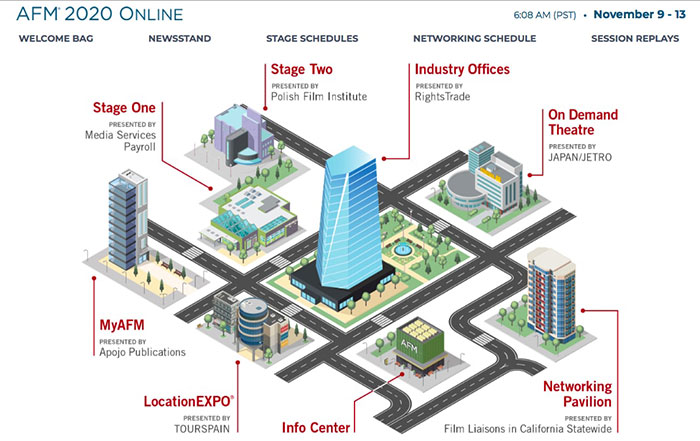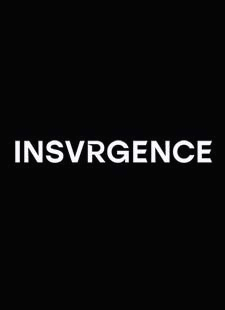The 41st annual American Film Market (AFM) took place on November 9, 2020. It “evolved” into a virtual Santa Monica, California (its traditional city) across eight virtual venues (as pictured in the drawing above), and offered five features, including the “Newsstand” and “Session Replays.” The virtual market continued “live” until November 13.
With 562 exhibiting companies from 48 countries, this AFM edition was “bigger” than the 2019 rendition (which welcomed 375 exhibitors). The registered buying contingent was also larger, numbering 1,468 (up from last year’s 1,300) from 66 countries. As for the number of movies screened, the official count was 465 (up from 313 in 2019) from 184 companies representing 24 countries.
Three of the venues on the “AFM Campus” — the Industry Offices, LocationEXPO, and the On Demand Theatre — went live on November 4 for pre-market screenings and project previews.
A preview of the AFM 2020 Online platform was shown on November 5 to help participants prepare and plan for this year’s market. It consisted of a 15-minute tour of the AFM Online Campus and buildings, including MyAFM, the stages, and the Networking Pavilion.
The AFM 2020 Online programming lineup had 70-plus sessions and 200 speakers. This was up from the 52 conferences and 150 speakers featured in 2019.
During the Keynote Conversations Opening Sessions, Mark Gill, president and CEO, Solstice Studios, commented that what “is incredibly heartening in the long-run is if you look at Japan and China and Korea, where the public health situation is under control, they’re breaking records.” This shows us that people still “like going to the movies.”
Elissa Federoff, president of Distribution at NEON, added, “We know that [international] audiences will come back to movie theaters, that the theatrical landscape will be vibrant again. This is very exciting news about the vaccine because it potentially makes the span of time [until we can return to normal] a little shorter.”
Asked about trends, Nat McCormick, EVP, Worldwide Distribution at The Exchange, explained: “There’s definitely a market for animation. The challenge is that there are some very dominant players, such as Disney and [its] Pixar doing animation, so competing against those is hard. The trick with pre-selling animation is that it’s very far off. There are two types of animation: There’s wide theatrical animation, with which you literally need to include a theatrical release in the U.S. to be able to get to the $10 million to $15 million international presales thresholds, and then there’s the smaller animation market that is literally just cartoons for TV. So there’s a market for that. It’s tricky. It takes a while, but that’s something that certain territories, such as Russia and Eastern Europe, really focus on.”
Audio Version (a DV Works service)











Leave A Comment